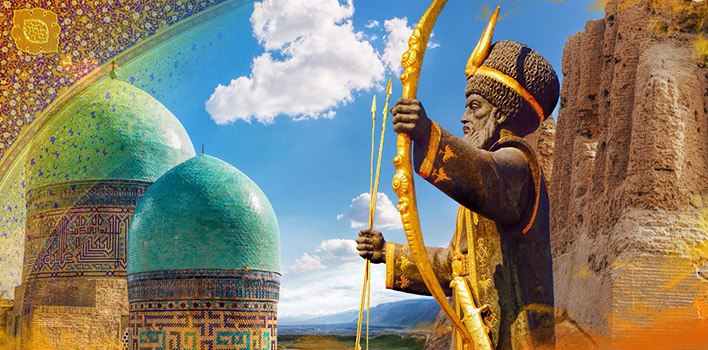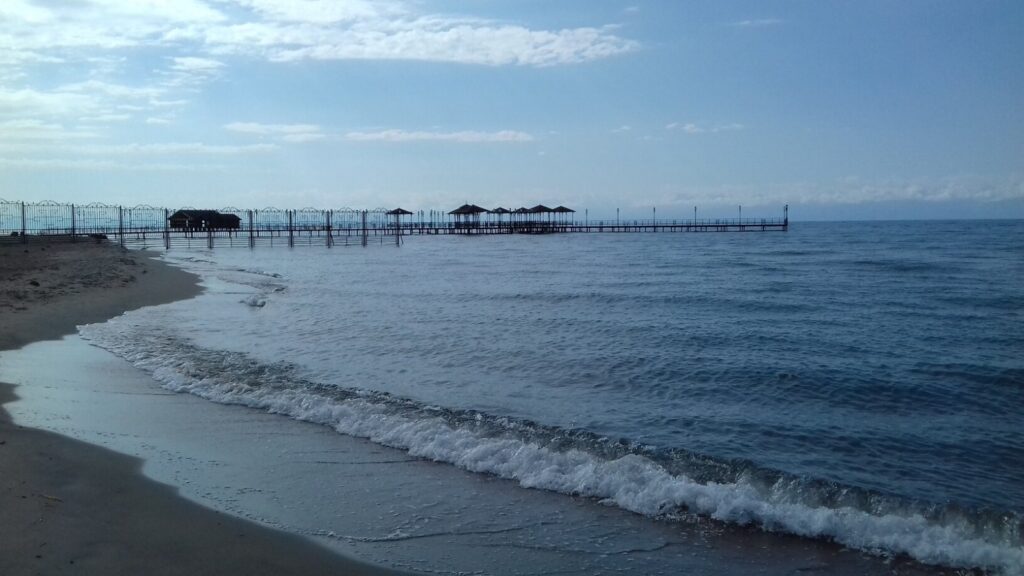Turkmenistan Tourism: Dinosaur Footprints, a Mystical Crater and Healing Lakes
Dotted with historical and cultural sites, and blessed with beautiful nature and a good climate, Turkmenistan is beginning to develop its tourism industry. Turkmen authorities are expanding tourist itineraries, and improving the infrastructure and quality of services. Measures are also in place to provide a clean environment, safe drinking water and better food hygiene. Turkmenistan has a variety of natural wonders. The unique landscapes of Kopetdag, the Karakum desert, the Amu Darya river, Koytendag, the subtropics of south-western Turkmenistan and the Turkmen coast of the Caspian Sea are ideal spots for ecological tourism. The Aydere Gorge in western Kopetdag is also popular with travelers. Here there are dozens of picturesque valleys with pure springs, as well as ancient fortresses and historical monuments that guard the secrets of ancient times. Koytendag, located in the south-east of the country, attracts tourists seeking the traces of dinosaurs that lived here in prehistoric times. The Sumbar Gorge in the south-west of the country also offers great opportunities for tourism development. Its beautiful mountain valleys, life-giving springs, and diversity of animal life make this place especially attractive. The national tourist zone Avaza on the Caspian Sea coast attracts tourists from all over the world. Its comfortable climate, therapeutic mud, and mineral springs create ideal conditions for the development of ecotourism. The Caspian Sea coast, with its amazing nature, changing in every season, impresses one with its beauty and charm. Places that are also worth visiting in Turkmenistan: Darvaza In the heart of Turkmenistan's Karakum Desert is the Darvaza gas crater, which looks like a gateway to the underworld. The fire pit results from unsuccessful drilling conducted by Soviet geologists in 1971. To prevent the natural gas from harming people and livestock, the geologists decided to set it on fire. The fire, which was supposed to go out in a few days, is still burning to this day. The tongues of flame, reaching ten meters in height, can be seen from several kilometers away. The crater is about 60 meters in diameter and 20 meters deep. Darvaza is located 266 kilometers north of Ashgabat and 90 kilometers north of the village of Erbent. Several sinkholes can be found in the vicinity of the crater; one of them is filled with a bright turquoise liquid. The most impressive sight is Darvaza in the early evening light. Arriving before sunset, you can enjoy a fantastic contrast: the crater, bathed in the orange rays of the setting sun, gradually sinks into darkness, illuminating the desert landscape with bright flames. Other sinkholes are best viewed during daylight hours, but one should be careful as the loose earth near the edges crumbles and chunks of earth fall into the abyss. There is a strong smell of gas near the pit, and the temperature is quite high, so staying here for a long time is not recommended. Yekedeshik Yekedeshik, or “one hole,” is a mysterious cave city located near the village of Takhta Bazar in Mary province, on the left bank of...


